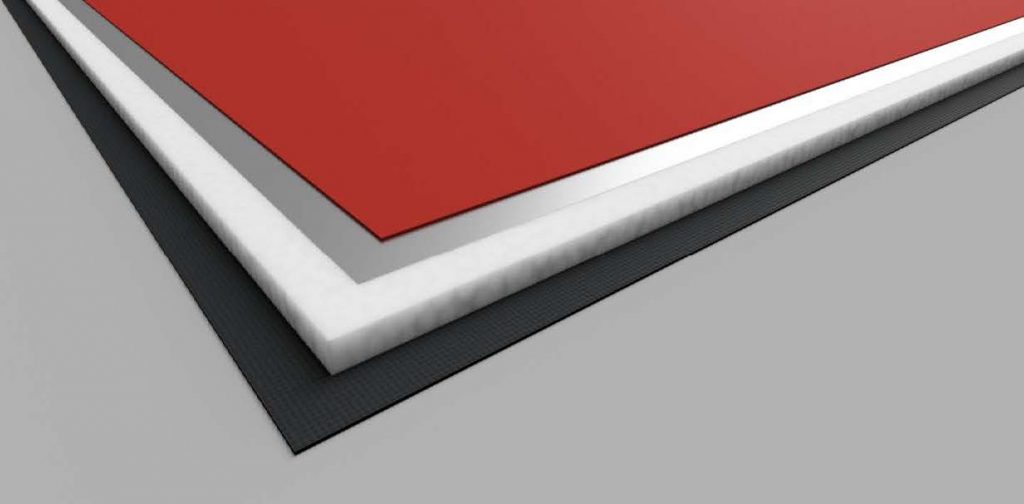Whether you have an unfinished basement or your first floor is built on a slab, concrete floor insulation should be one of your first considerations when you decide to renovate or remodel.
Do you need concrete floor insulation? What types of concrete floor insulation exist? Are there thin options for rooms with minimal headroom?
Carefully considering and deciphering the data is vital to you making an informed decision about concrete floor insulation for your home.
Why Insulate Concrete Floors?
An unfinished, uninsulated basement can account for nearly one-third of your home’s total heat loss. Concrete floor insulation can not only significantly increase the comfort of your home but it can dramatically increase its energy efficiency as well.

Types of Thin Insulation Options for Concrete Floors
The standard height for a basement is typically about eight feet tall. Although eight feet is the standard height for a residential living space, basements often have plumbing, electrical, and HVAC systems that protrude into the room from the ceiling. Because of these mechanical protrusions, you often have to finish the ceiling lower than eight feet to hide the pipes, wires, or vents.
Due to the lowered ceiling, you may prefer thin floor insulation on concrete to maintain as much headroom as possible in your basement.
There are a variety of types and styles of thin floor insulation that are commonly used today:
Radiant Foam Insulation
Typically made of EPS (expanded polystyrene) or XPS (extruded polystyrene) and faced with a reflective layer, radiant foam insulation is a popular choice for insulating basement walls and concrete slabs.
Although you can use it to insulate basement walls effectively, radiant foam has some significant disadvantages when used as floor insulation boards.
- Radiant foam insulation usually comes in one-inch or greater thicknesses, making it one of the larger floor insulation options.
- Some radiant foam has limited compressive strength that makes it unsuitable for underfloor use.
Fiberglass Floor Foil
Fiberglass floor foil is a popular insulation choice for various home and RV applications.
Its diminutive thickness may be enticing for underfloor use, but its lack of compressive strength makes it a squishy and undesirable subfloor material.
Additionally, fiberglass floor foil is incompatible with electric radiant floor heating, one of the most popular and efficient forms of heat available for basement remodels.
Plastic Film Vapor Barriers
Plastic film vapor barriers prevent condensation and other hazardous moisture from developing mold and mildew in your living spaces.
It works exceptionally well as a moisture barrier, but plastic film vapor barriers have inferior insulative qualities and virtually non-existent R-values, which makes them substandard insulation materials for concrete floors.
Plywood or Sleepers
Sleepers are dimensional lumber installed on top of your concrete floor to support and provide nailing for hardwood flooring and other flooring materials.
You can sometimes use plywood in conjunction with sleepers to create an extremely sturdy and durable subfloor structure.
Plywood and sleepers can be invaluable when installing hardwood flooring, however, they leave much to be desired when it comes to insulation; wood does not have exceptional insulative properties.
Rigid Boards
Rigid foam insulation boards are similar to radiant foam insulation in that they are made from EPS or XPS, but differ in that they do not have a reflective facing.
Although rigid foam boards provide sufficient insulation, you need to be sure that the product you select provides you with a suitable amount of compressive strength in order to be used as a subfloor material.
Additionally, you should note that most rigid foam options come in thicknesses ranging between one and two inches thick, which can result in a substantial build-up in floor height.
You should also note that rigid foam board may not be an acceptable underlayment for electric radiant floor heating.
The Best Thin Insulation Option for Concrete Floors
The options discussed above may suit your needs, but there is an undisputed champion when it comes to thin floor insulation on concrete. ™
Ultralight™ Insulation Boards 4-in-1
Measuring a mere ¼” thick, Warmup’s Ultralight™ Insulation Boards are one of the thinnest options for concrete floor insulation.

Thinking of finishing your basement floor with tile? The Ultralight™ Insulation Boards can be substituted for your traditional decoupling layer, to prevent cracks and breaks in your new tile floor while also providing an insulating layer. This improves the quality of your new tile work and prevents you from adding any unnecessary height to your finished floor.
Warmup Ultralight™ Insulation Boards provide unique 4-in-1 functionality that not only delivers superior thermal and acoustic insulation but also serves as an ANSI-approved decoupling membrane and aids in heat spreading throughout a room.


The Perfect Pairing – Radiant Floor Heating and Concrete Floors
Electric radiant floor heating has long been one of the most popular heating options for concrete floors. Its popularity has persisted, but one drawback was always the heat loss that occurred down through the uninsulated concrete floor. Now, with Warmup’s Ultralight™ Insulation Boards, those drawbacks are a thing of the past.
When paired with one of Warmup’s innovative radiant floor heating systems, the unique 4-in-1 functionality of the Ultralight™ Insulation Boards create revolutionary warmth and efficiency.
Built by sandwiching heat-spreading aluminum and 220kPa insulation between two layers of non-woven fleece, Ultralight™ Insulation Boards provide substantial benefits when paired with electric radiant floor heat:
- Increases heat spread by 50%
- 30% faster heat-up times
- Increased energy efficiency
- Same comfort temperature with 12% less energy
- Reduces energy use during heat-up by 69%
- Decoupling membrane for higher quality tile installations
Discover the Best Concrete Floor Thin Insulation and Radiant Floor Heating Systems with Warmup
Create the cozy, comfortable family room, bedroom, or man cave of your dreams by combining one of Warmup’s electric underfloor heating systems with their new Ultralight™ Insulation Boards.
With Warmup, you don’t need to sacrifice comfort for energy efficiency; you can be warm while still being frugal.
Save up to $1 per square foot annually on your heating bills by using Warmup’s concrete floor insulation boards.
Want to take your savings to the next level? Pair your Warmup radiant floor heat and floor insulation with one of Warmup’s innovative smart thermostats– like the 6iE Smart WiFi Thermostat– and save up to 25% on your energy bills.
Check out Warmup’s full lineup of cutting-edge products, or get instant pricing online for your home or project today and discover why Warmup is the world’s best-selling floor heating brand.


